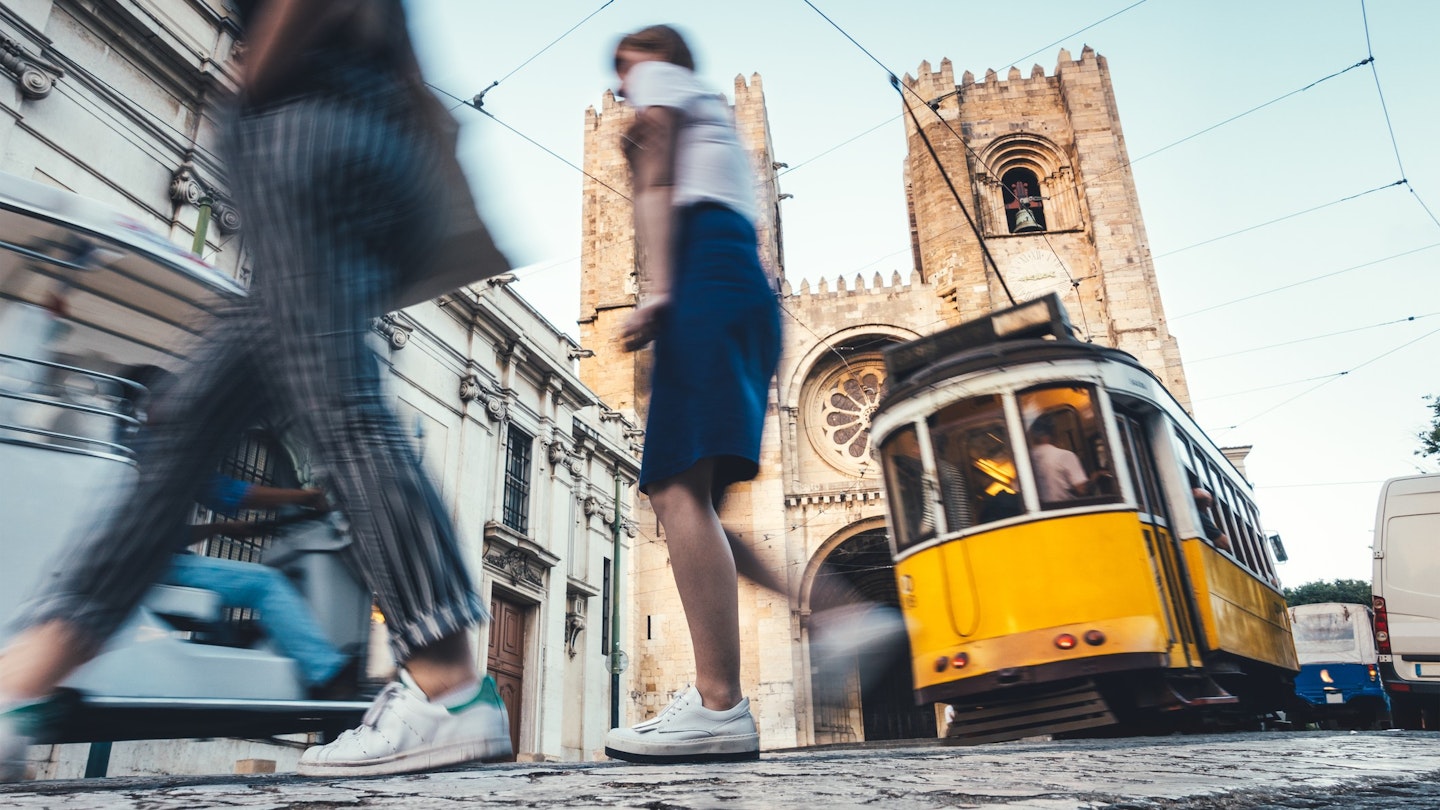Nestled between Spain and the Atlantic Ocean, Portugal is a compact country that you could fit into a two-week road trip. This small country boasts a diverse culture, delectable cuisine, and stunning landscapes that range from the rugged coast in the west to the mountainous inland. The cool and lush north contrasts with the flat and sunny south. Ancient Roman, Celtic, and Islamic influences have shaped the customs and language of this land, which has officially been a country for more than 870 years, making it one of the oldest in the world.
This list of the best things to do in Portugal caters to foodies, outdoorsy adventure seekers, culture and history buffs, and travelers who want to take it all in at once, hopping from one must-see attraction to the next.
1. Listen to a live fado performance in Lisbon
Fado, a musical genre that originated in Portugal and is on UNESCO’s Intangible Cultural Heritage of Humanity list, envelops listeners in melancholic, sorrowful, and heartfelt music. Slow, lingering songs are accompanied by the sound of guitarra Portuguesa (Portuguese guitar) and other string instruments.
To experience it firsthand, head to a casa de fado in Lisbon. All options provide an opportunity to enjoy a live performance, and some even pair the music with a traditional Portuguese dinner.
Planning tip: For more diversity, consider visiting Lisbon in late September to attend Santa Casa Alfama, a two-day music festival dedicated entirely to fado.
2. See prehistoric rock art at Vale do Côa
A UNESCO World Heritage site since 1998, the prehistoric rock art site in Vale do Côa, along with nearby Siega Verde in Spain, is the most remarkable Paleolithic art site in the Iberian Peninsula.
Planning tip: Head to the Museu do Côa first before joining a guided tour of the archaeological site and open-air rock art gallery, which encompasses more than 1,000 engravings from the Paleolithic and Iron Age periods scattered around identified sites.
3. Indulge in conventual sweets
Traditional Portuguese pastries known as conventual sweets feature core ingredients such as egg yolks, sugar, and occasionally almonds. Created by cloistered nuns and monks, these unique treats were made using surplus egg yolks, as the whites were exported for winemaking.
Each region of Portugal boasts its traditional conventual sweet, often incorporating local or seasonal ingredients. Renowned custard tarts, known as pastel de nata, are a famous example from Lisbon, attracting variations, including vegan alternatives.
4. Party at Santos Populares, local saints’ festivals
Throughout Portugal in June, traditional or popular saints’ festivities known as Santos Populares occur. Among the best-known are St. Anthony’s in Lisbon (June 13) and St. John’s in Porto (June 24). Local neighborhoods come alive with colorful ribbons adorning narrow cobblestoned streets as locals cook sardines and pork steaks, coupled with local beer or house wine. Although these festivals originally honored community patron saints, today they offer the perfect opportunity to meet locals, share meals, and dance into the night.
5. Surf (or watch) the giant waves in Nazaré
The giant Atlantic waves that crash along Nazaré’s shores during the winter months are a thrill for surfers and onlookers alike. Nazaré gained international fame when North American surfer Garrett McNamara set a world record by riding a 24m (78ft) wave in 2011. This location has since become synonymous with giant wave surfing.
6. Stargaze at Great Lake Alqueva
Thanks to cloudless skies year-round and minimal light pollution, Great Lake Alqueva in Alentejo is one of Portugal’s premier stargazing locations. These unique conditions led to the lake being certified as the first official starlight tourism destination in the world. Several local companies offer stargazing and nighttime tours of the lake, catering to budding astronomers.
Planning tip: Prebooking is required, although admission is free for children under eight, with scheduled starry observations available both day and night.
7. Celebrate Carnaval
During the three days leading up to Ash Wednesday, Portugal comes alive with Carnaval festivities. Residents dress in costumes and participate in parades across the country. It is often likened to a local version of Halloween, with celebrations dating back to the 13th century when ancient Roman pagan festivities were adopted by the Catholic Church. While nearly every town hosts its Carnaval parade on Fat Tuesday, regions like Torres Vedras, Ovar, and Loulé are particularly famous for their vibrant celebrations.
8. Stay in a traditional schist village
Once key commercial centers, the mountain villages between Coimbra and Castelo Branco faced decline in the mid-20th century as local populations migrated abroad. The unique black schist stones used to construct these villages are now celebrated in the Aldeias do Xisto project, which revives 27 traditional villages as rural tourism areas surrounded by stunning natural landscapes.
9. Taste Portuguese wine
Portugal is home to well-known wine regions such as Alentejo, famous for its bold reds, and Douro, the birthplace of port wine. However, wineries exist across the country, including in the Azores and Madeira archipelagos.
Planning tip: The Minho region is celebrated for producing unique Vinho Verde, known for its freshness and floral attributes. Quinta da Aveleda is a must-visit winery to experience these distinctive wines.
10. Road trip on Estrada Nacional 2
Connecting Chaves in the north to Faro in the south, Estrada Nacional 2 spans 740km (460 miles) and showcases the scenic beauty of Portugal. Often dubbed the “Portuguese Route 66,” this historic road invites travelers to explore off-the-beaten-path attractions and experience authentic community life.
As you drive, enjoy the changing scenery, from mountainous terrain to the treeless plains of Alentejo and the golden sand beaches of the Algarve. Feel free to stop and take in points of interest along the way, or align your adventure with suggested routes focusing on either castles or museums.
This article was first published on October 27, 2021, and updated on January 22, 2024.





